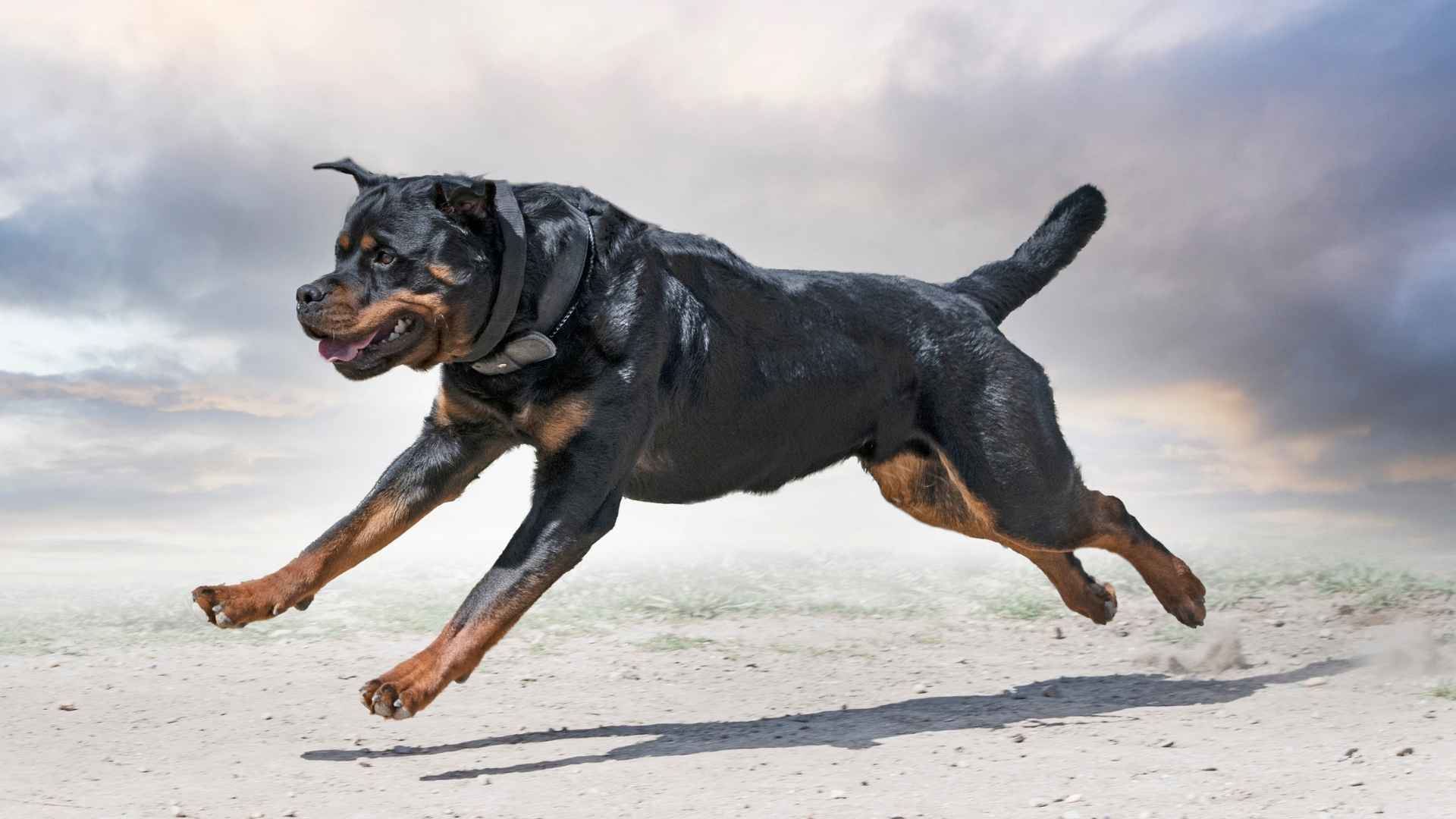Bravery isn’t always loud—it can stare danger in the face with quiet resolve and a steady stance. Among the canine kingdom, there are breeds known not just for their loyalty and devotion but for their unwavering courage.
These dogs don’t back down when tensions rise; instead, they rise to meet the moment. Whether protecting their families, holding ground in high-stress situations, or serving alongside military and police units, these breeds exemplify fearlessness.
What makes them so formidable isn’t just muscle or size—it’s their spirit. These dogs are alert, confident, and unshakably loyal, often putting themselves between danger and the ones they love. It’s this bold instinct to defend, coupled with sharp intelligence and emotional depth, that places them among the toughest in the canine world.
In this article, we spotlight the dog breeds that never retreat from confrontation. Whether it’s guarding territory, standing tall in chaos, or facing the unpredictable wild, these courageous canines are always ready for the fight.
Dog Breeds That Never Run From A Fight
1. Anatolian Shepherd
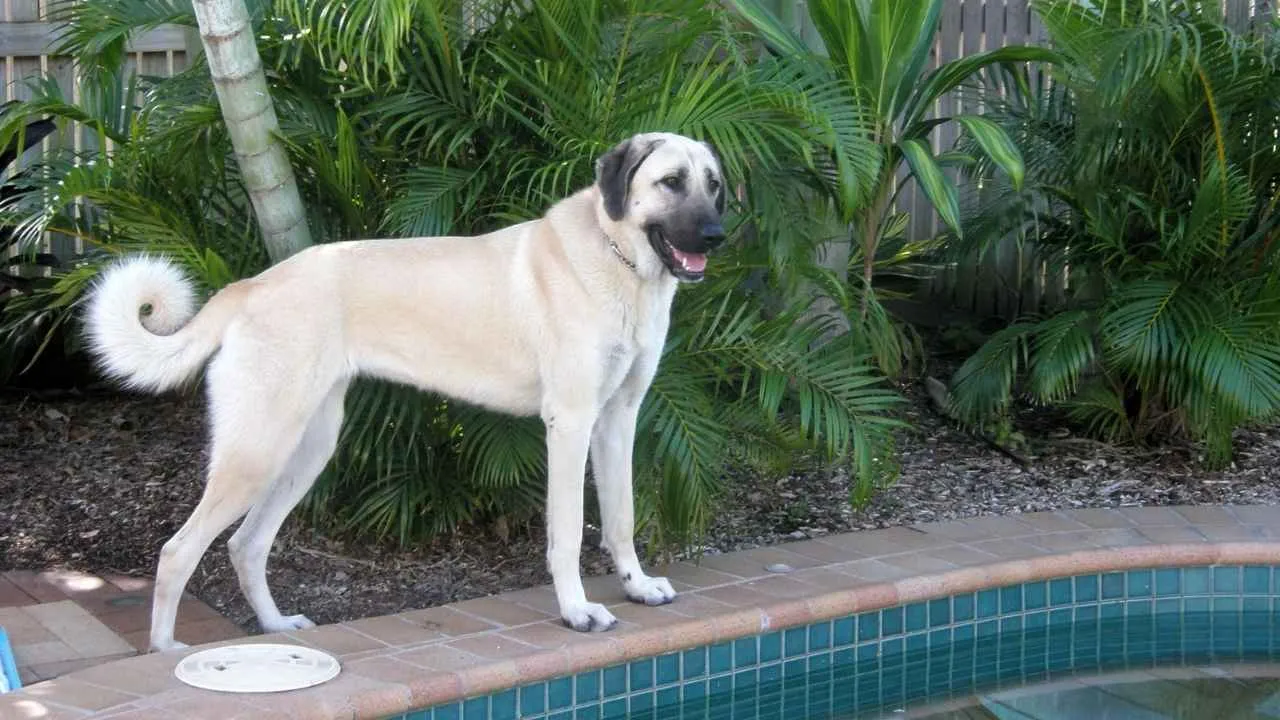
The Anatolian Shepherd, also known as the Coban Kopegi, is a formidable livestock guardian originating from the rugged Anatolia region of Turkey. WebMD describes Anatolian Shepherd Dogs as a powerful breed developed for work and guarding duties.
With an imposing height of 27 to 29 inches and a weight ranging from 80 to 150 pounds, these giants are built for endurance and power. Their short, dense coats come in shades like brindle, white, and various fawn tones, and they typically live 11 to 13 years.
This ancient breed was developed to defend flocks from predators in harsh terrains, often relying on sheer presence and vigilance.
Loyal and self-reliant, they’re not particularly affectionate but exhibit fierce devotion to their families. As members of the Working Group, they thrive in expansive environments where they can exercise their natural protective instincts.
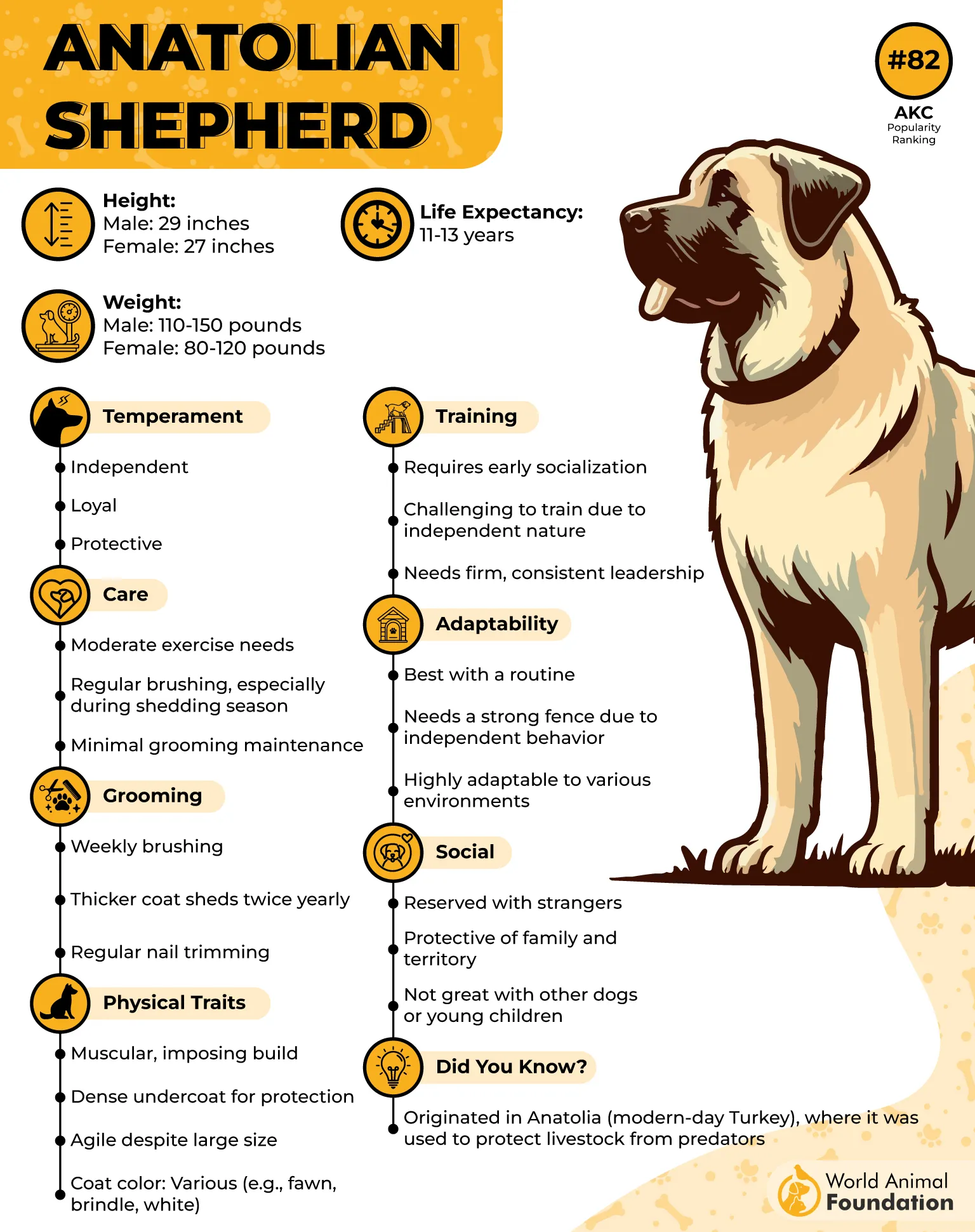
Care Needs
Caring for an Anatolian Shepherd requires dedication and an understanding of their unique temperament. While they don’t demand intense activity, they need daily exercise—walks, games, or agility—to stay mentally and physically stimulated.
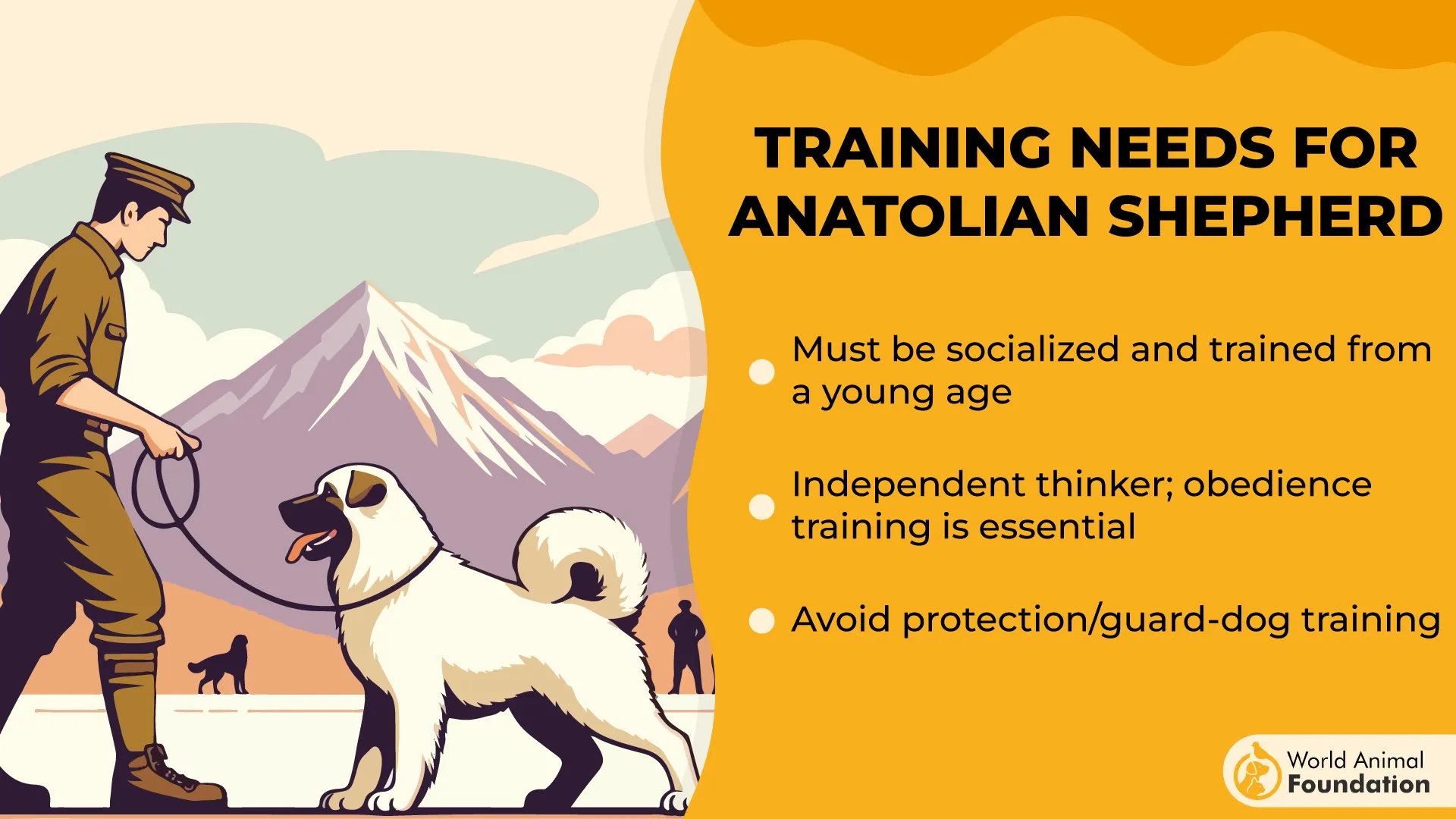
Grooming is minimal, though seasonal shedding requires extra brushing. Early and consistent training with positive reinforcement is vital, as is proper socialization to manage their naturally suspicious nature.
Did you know? The breed’s lineage stretches back 6,000 years to the Bronze Age, making it one of the oldest known domestic dog lines.
2. Staffordshire Bull Terrier
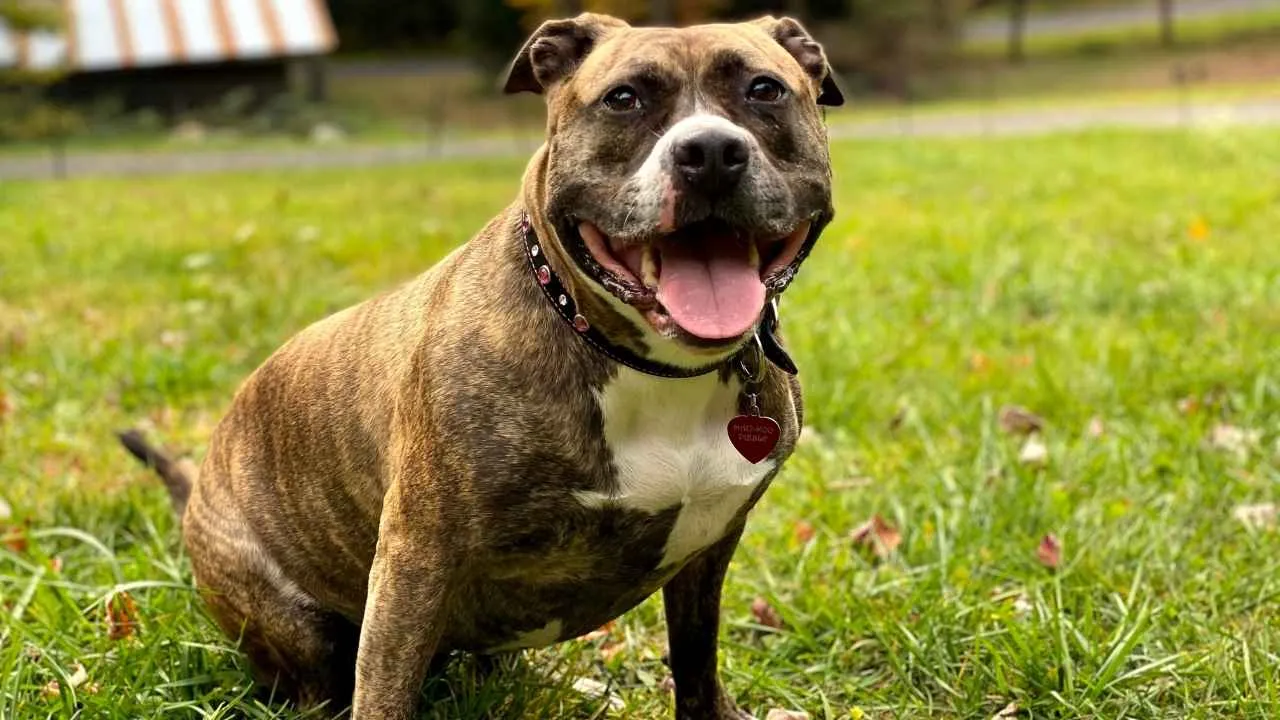
Originally developed in 19th-century England, the Staffordshire Bull Terrier—commonly called “Staffy” or “Staffy Bull”—was bred by crossing Bulldogs with terriers, producing a compact yet powerful dog built for courage and endurance.
Standing 14 to 16 inches tall and weighing between 24 to 38 pounds, this breed is the very definition of muscular grit wrapped in affection. With a life expectancy of 12–14 years, Staffies possess a short, smooth coat that comes in various shades, including black, white, blue, and brindle.
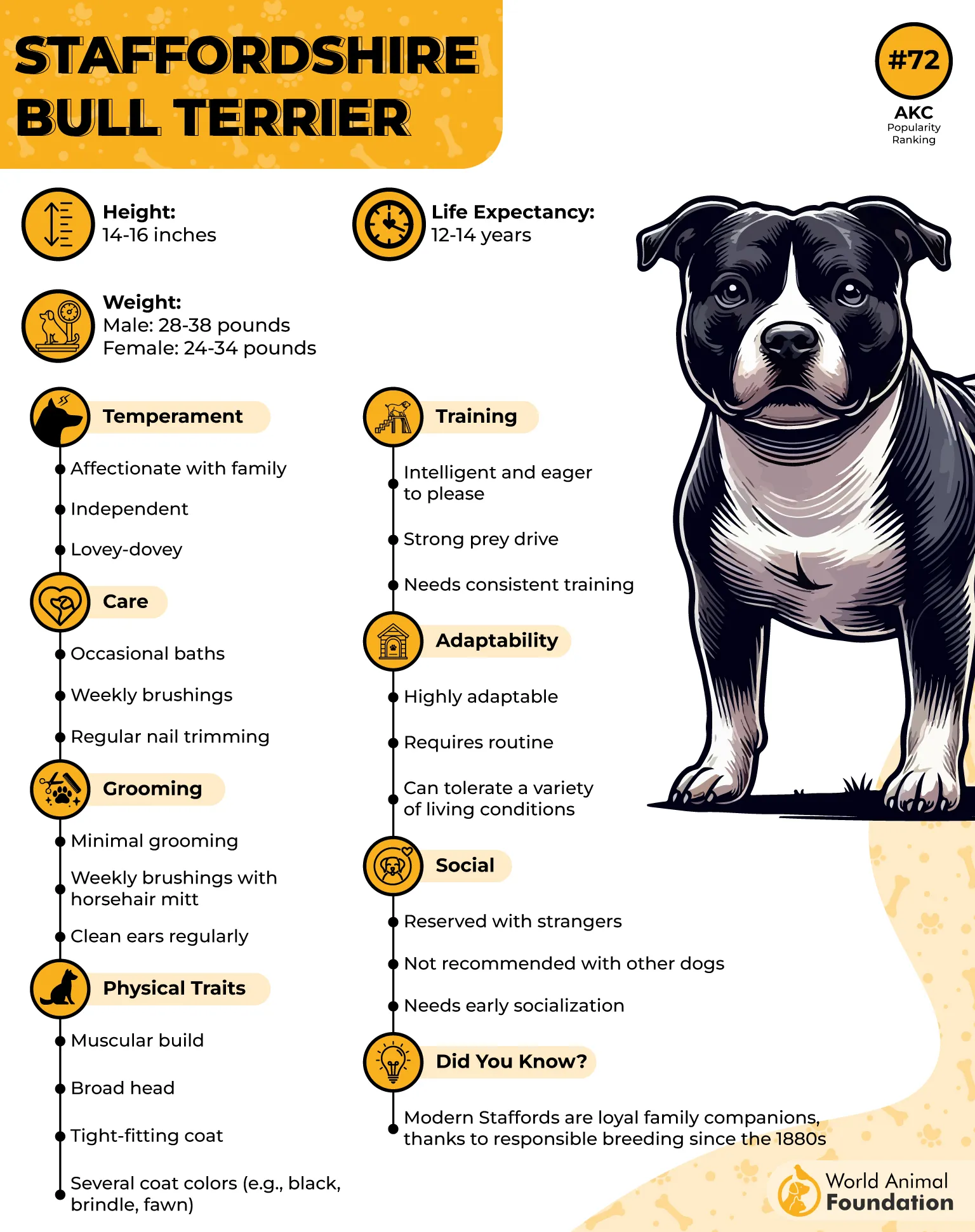
Despite their origins as fighting dogs, modern Staffies are loyal, playful, and deeply affectionate with their human companions. They are particularly known for their bold nature and strong protective instincts, making them fearless defenders of their families.
They become good family dogs. Their cheerful disposition and determination are balanced by a loving heart, earning them a reputation as brave yet tender-hearted pets.
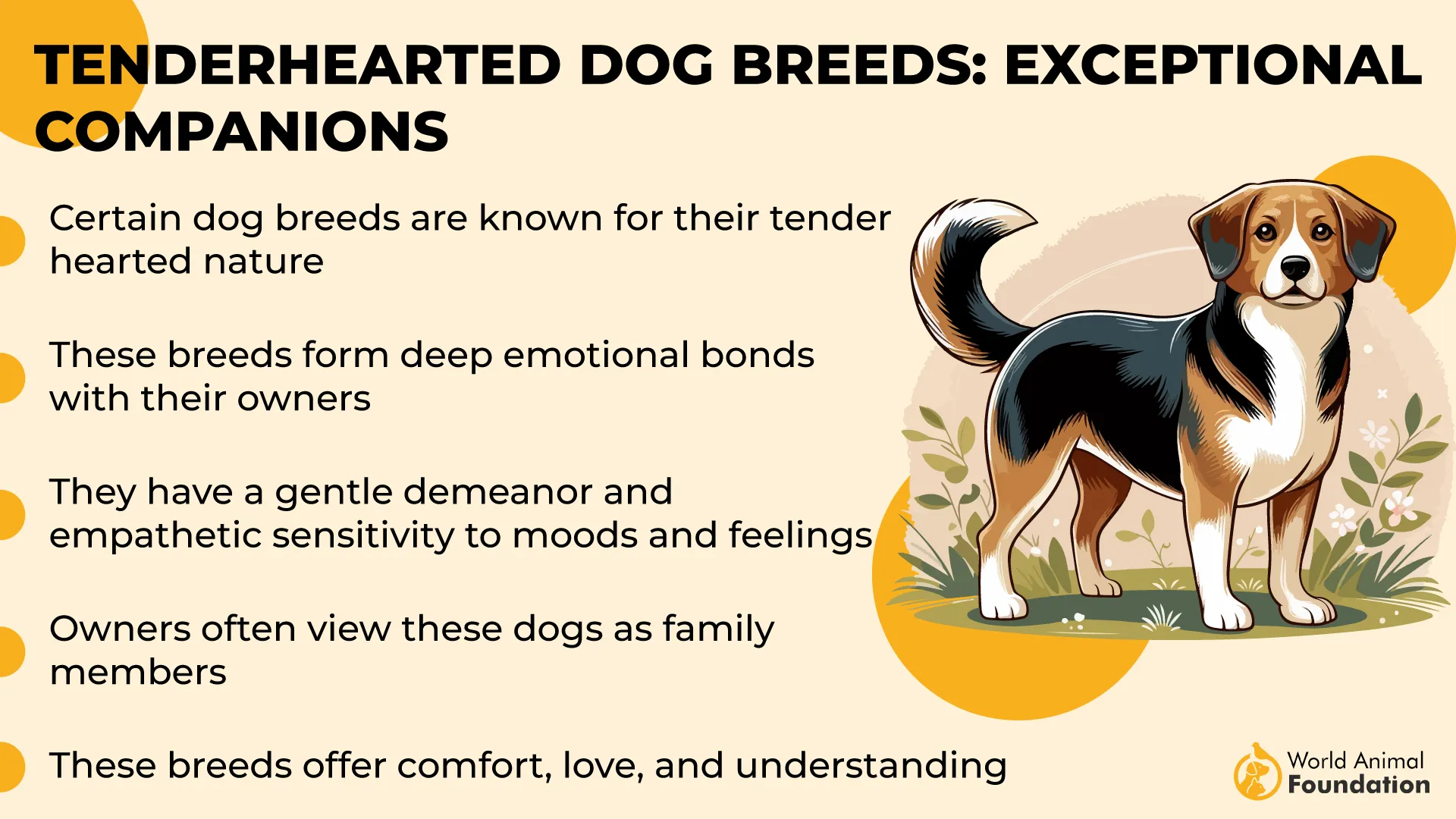
Care Needs
Staffordshire Bull Terriers require moderate grooming due to their short coat, but their care needs extend beyond appearance. PetMD advises reducing outdoor activity during hot weather and ensuring the dog has ample access to shade and fresh water.
They should always be walked on a leash, as their prey drive can lead to aggressive behavior with unfamiliar dogs and small animals. Regular mental stimulation and structured training are crucial to channel their energy positively.
Did you know? Staffies are the official mascot of the Staffordshire Regiment and have even completed military journeys on foot after escaping moving trains.
3. Giant Schnauzer
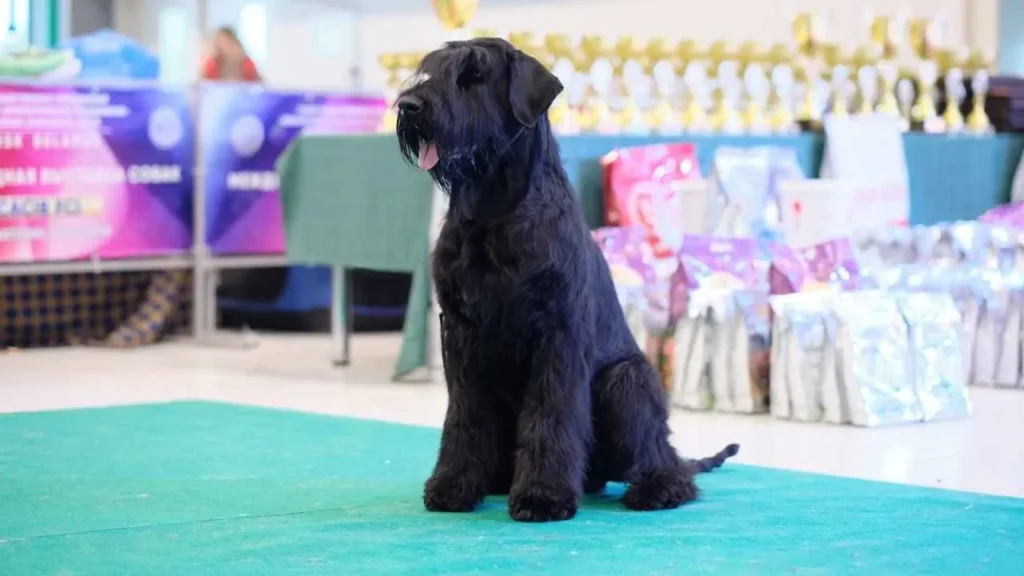
Bred in the Bavarian Alps during the late 1700s, the Giant Schnauzer is a fearless working dog developed to drive cattle and guard property. The AKC describes the Giant Schnauzer as a bigger and more robust counterpart to the Standard Schnauzer, ideally embodying the breed standard’s vision of a “bold and valiant figure of a dog.”
This robust breed stands up to 27.5 inches tall and can weigh as much as 95 pounds, making it the largest of the Schnauzer trio. With a rugged beard, intense eyes, and a dense double coat—either salt-and-pepper or solid black—the Giant Schnauzer embodies boldness and purpose.
Originally refined through crosses with working dogs and black Great Danes, they served as protectors for butchers, innkeepers, and later became trusted military dogs in both World Wars. They belong to the Working Group and typically live 10–12 years.
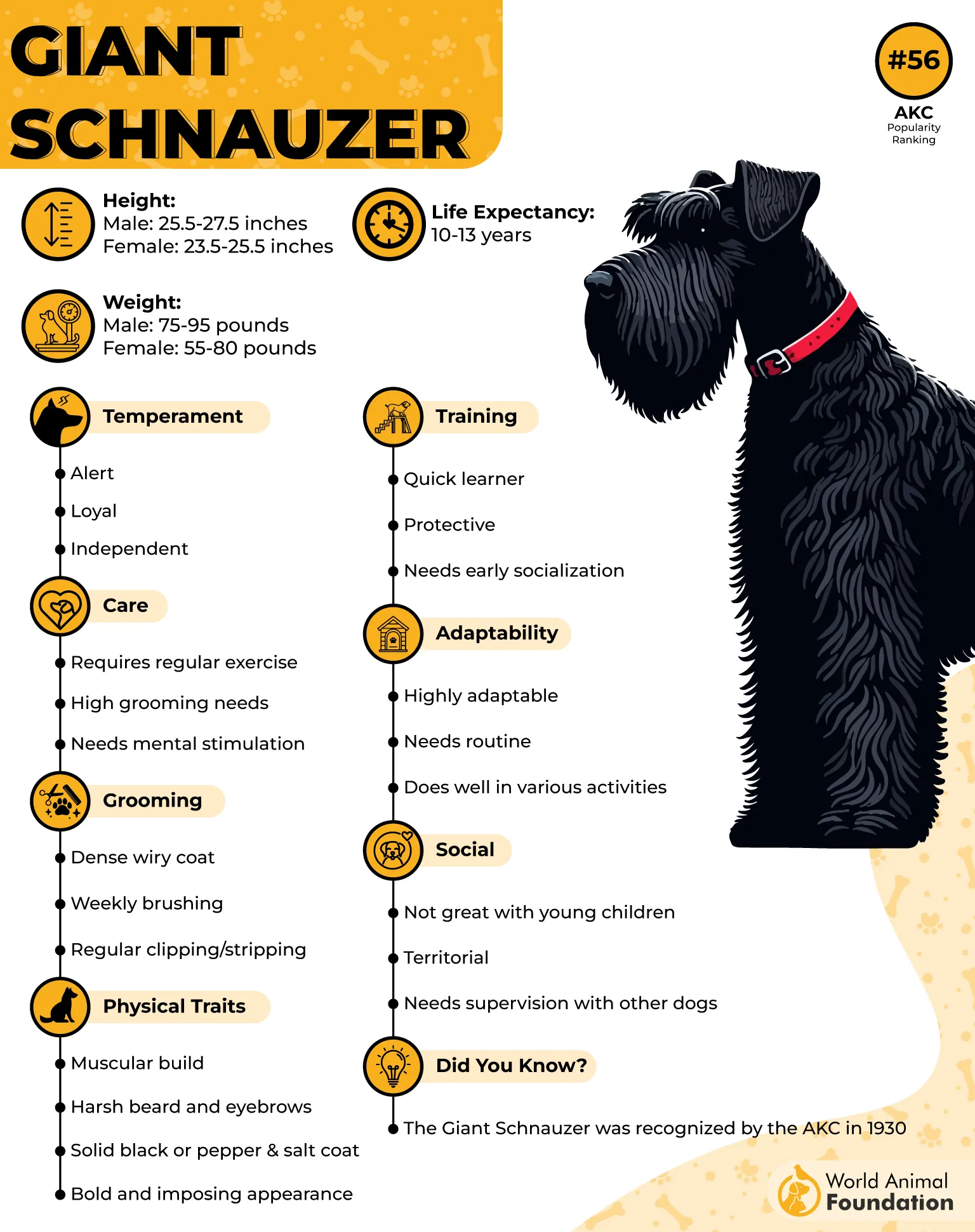
Care Needs
Giant Schnauzers require high mental and physical stimulation. Their protective instincts make consistent, early training essential, along with ample socialization.
They benefit from a structured routine filled with exercise, like agility or herding. Their wiry coat demands regular grooming to prevent matting and maintain their signature look. Without enough activity and attention, these alert dogs can become restless and destructive.
Did you know? The Giant Schnauzer’s intimidating presence and loyalty led to its use in military and police work across Europe.
4. Cane Corso
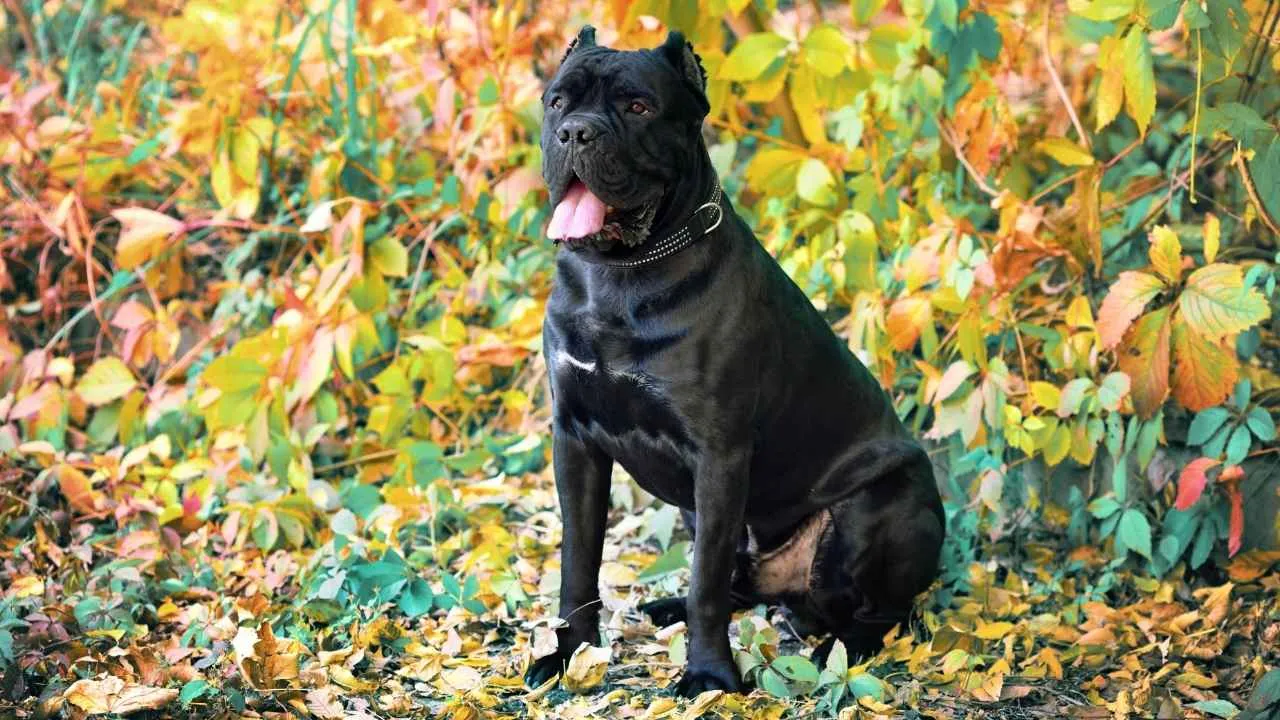
The Cane Corso, also known as the Cane Corso Italiano or Cane Corso Mastiff, hails from ancient Rome and descends from Molossian war dogs. Originally bred as a versatile farm guardian, this powerful breed is well-muscled, confident, and built for action.
Standing 23 to 28 inches tall and weighing between 90 and 110 pounds, the Cane Corso is part of the Working Group. With a sleek, short coat that can appear in shades like black, gray, brindle, and fawn, it gives off an aura of regal toughness.
Its lifespan ranges from 9 to 12 years. Despite its formidable presence, the breed is affectionate with family and known for its loyalty, intelligence, and steadfast courage.
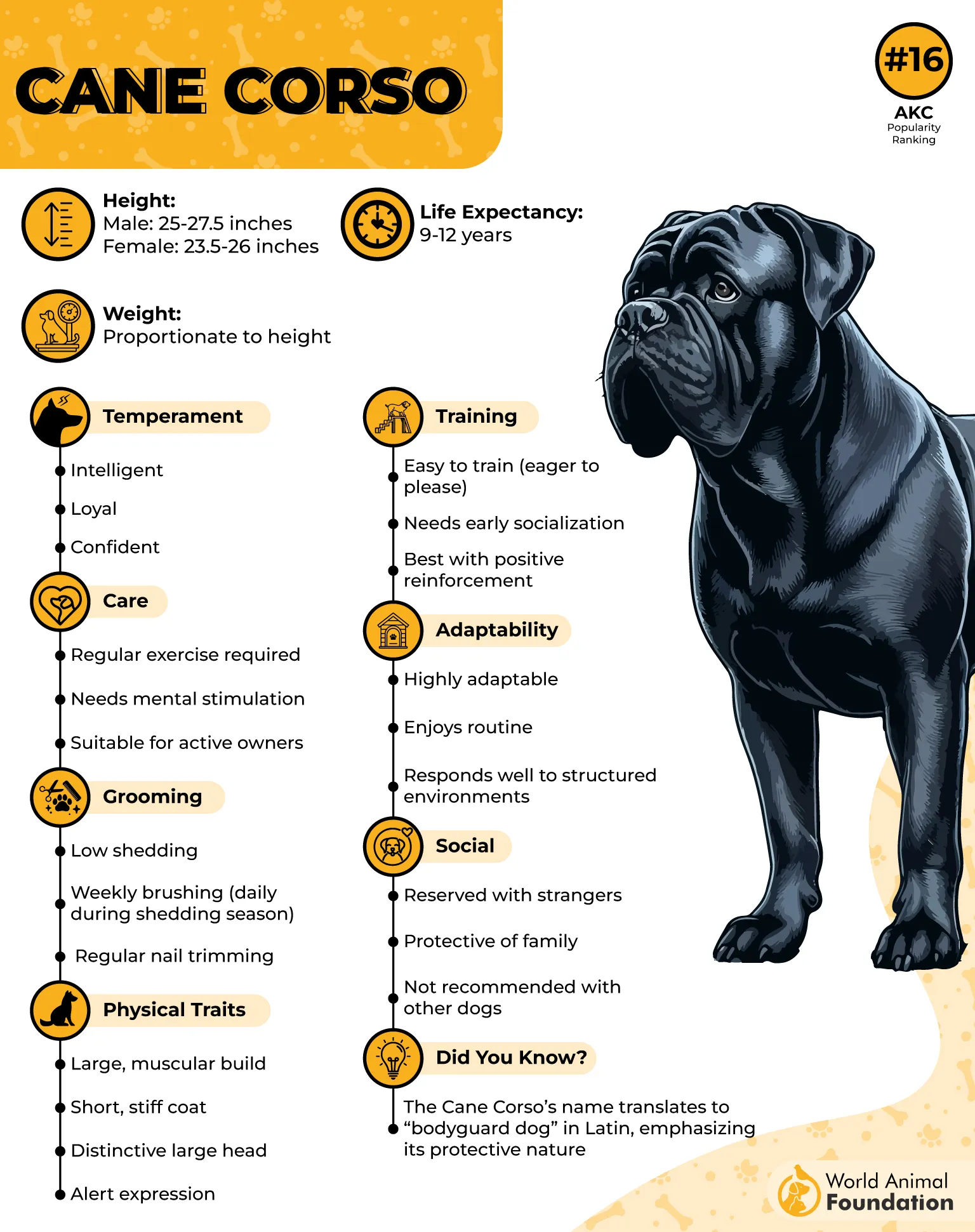
Care Needs
The Cane Corso is low-maintenance when it comes to grooming, requiring only weekly brushing due to its short coat. However, it needs regular nail trimming, dental care, and ear checks.
This breed thrives on physical activity and benefits from structured exercise routines like long walks, play sessions, and mental challenges. Early socialization and firm, consistent training are essential to shape their natural guarding instincts into reliable companionship.
Did you know? The Cane Corso was relatively unknown outside Italy until the 1980s and was officially recognized by the AKC in the 21st century.
5. Rhodesian Ridgeback
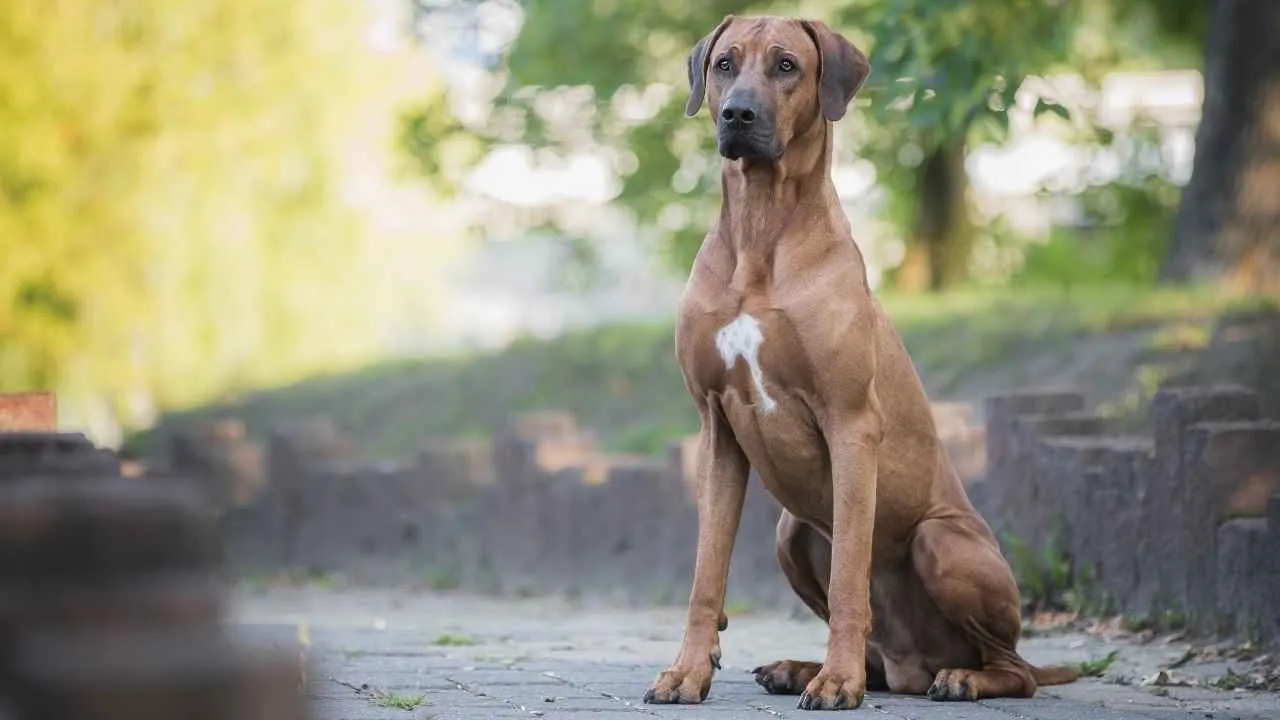
Also known as the African Lion Dog or Van Rooyen’s Lion Dog, the Rhodesian Ridgeback is a powerfully built hound with a signature strip of hair along its spine growing in reverse. This breed originated in Southern Africa, where it was developed from crosses between European dogs and native African breeds to hunt lions and guard property.
Standing 24–27 inches tall and weighing 65–85 pounds, Ridgebacks are known for their striking wheaten coat, muscular physique, and commanding presence. Their expressive amber or yellow eyes, broad skull, and gently curled tail give them a regal yet imposing look.
Though their loyalty is unwavering, their independence can challenge novice owners. This breed belongs to the Hound group and lives around 10–12 years.
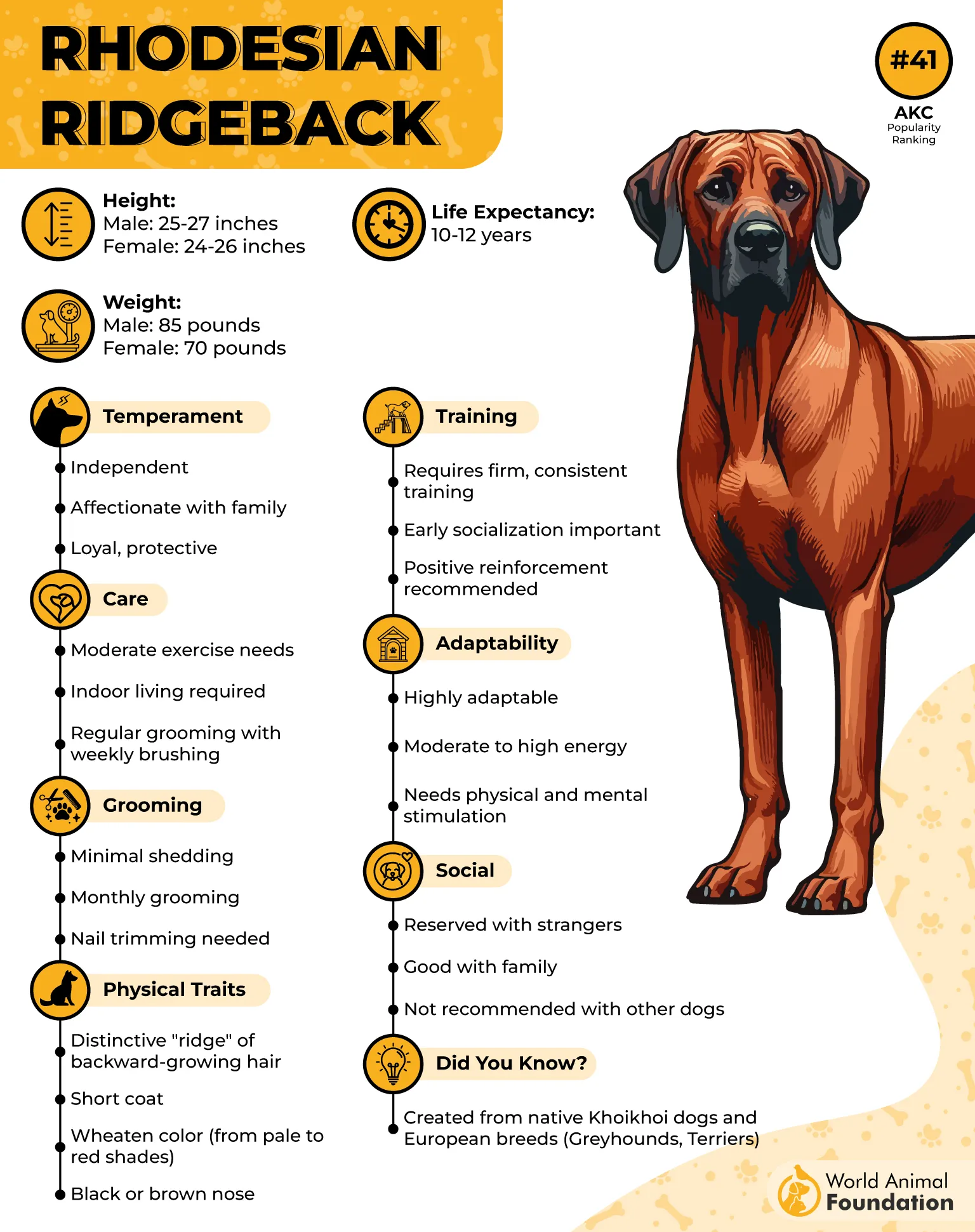
Care Needs
Rhodesian Ridgebacks need consistent physical and mental activity to stay happy. Daily exercise is a must, whether through runs, hikes, or agility sports.
While their grooming is minimal—weekly brushing usually suffices—they require early socialization and firm, positive training to ensure they remain manageable. A securely fenced yard is recommended due to their strong prey drive and protective nature.
Did you know? Ridgebacks were once used to hunt lions and became widely known in the 1870s among big game hunters in what is now Zimbabwe.
6. German Shepherd
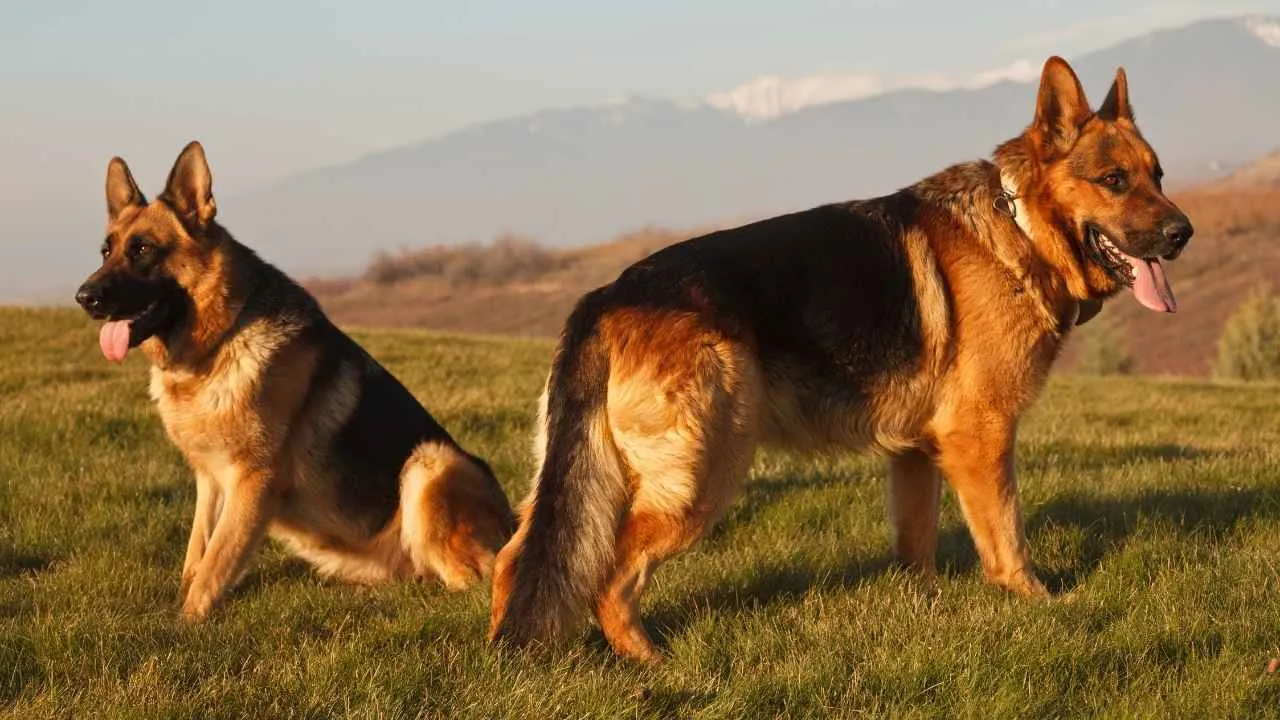
With origins in late 19th-century Germany, the German Shepherd—also known as the Alsatian—is one of the most iconic working breeds in the world. Initially developed from herding and farm dogs, this breed was refined to be strong, smart, and immensely trainable.
Belonging to the Herding group, German Shepherds typically stand between 22–26 inches tall and weigh around 50–90 pounds. Their muscular build, alert posture, and keen gaze make them natural protectors and powerful deterrents to threats.
A thick double coat in shades of black and tan, sable, or black and silver adds to their commanding presence. Loyal to a fault and courageous under pressure, these herding breeds serve widely in police, military, and rescue roles across the globe. Their lifespan ranges from 12 to 14 years.

Care Needs
This energetic breed thrives in active households with experienced owners who understand the importance of training. These loyal breeds require regular mental and physical stimulation—long walks, obedience sessions, and interactive play help meet their high activity levels.
Their dense coats shed year-round and heavily during spring and fall, necessitating frequent grooming. Without adequate exercise or engagement, they may develop behavioral issues.
Did you know? A German Shepherd named Orient guided blind hiker Bill Irwin through the entire Appalachian Trail in 1990.
7. Rottweiler
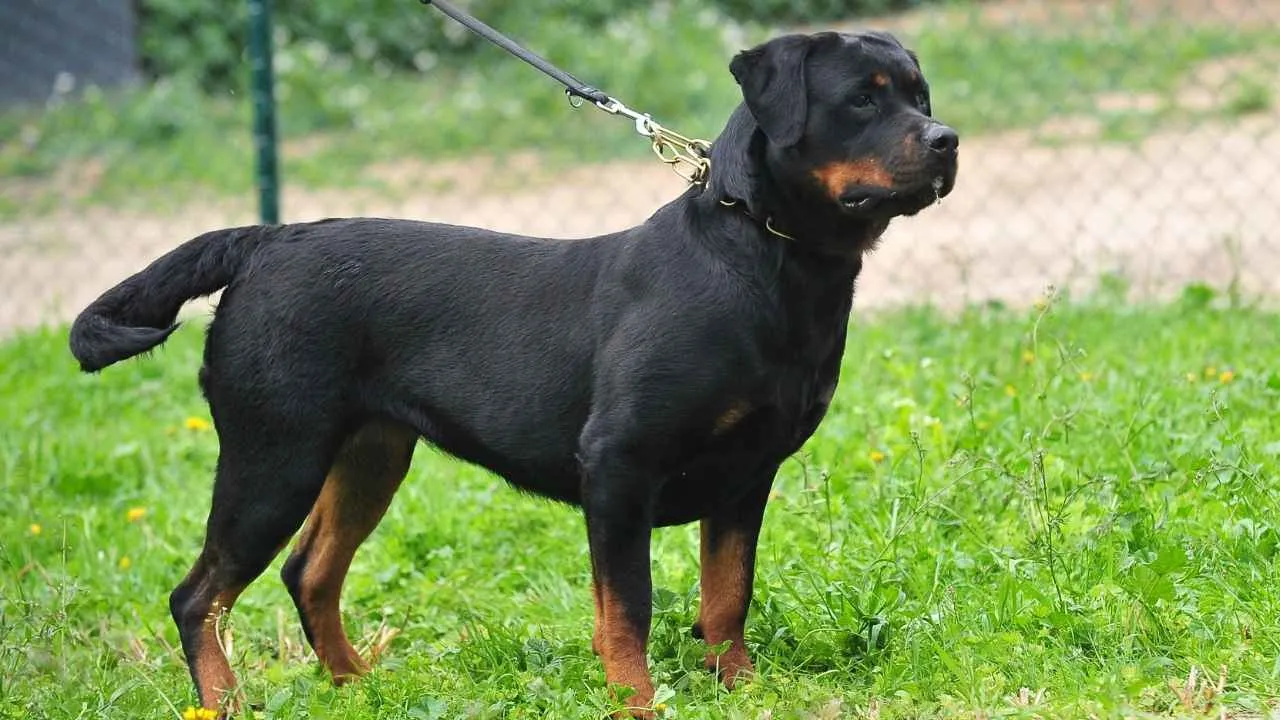
The Rottweiler, often called a “Rottie,” hails from Germany and descends from ancient Roman drover dogs. With a height of 22–27 inches and a muscular build weighing between 90–110 pounds, this working breed is known for its black coat accented with tan markings.
Originally bred to herd livestock and guard valuables, Rottweilers possess a powerful physique, deep chest, and a stoic expression that immediately commands respect. Their calm confidence and loyal temperament make them natural protectors. They’re part of the Working Group and typically live 9–10 years.
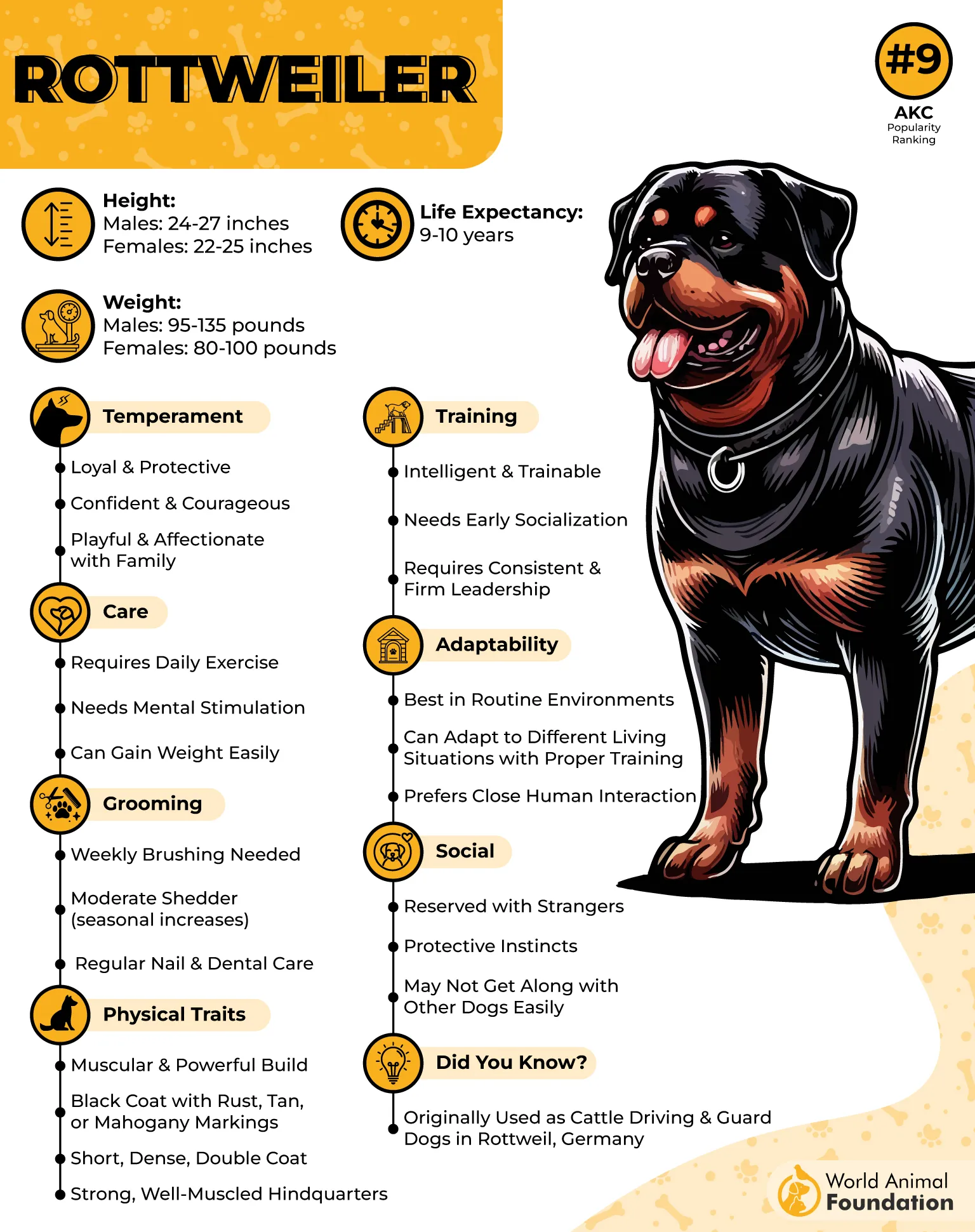
Care Needs
These guard dogs require consistent care to maintain both body and mind. These slow-maturing dogs need at least 60 minutes of daily exercise, and mental stimulation is equally important to curb boredom-driven behaviors. Without sufficient enrichment, Rotties may develop habits like chewing or digging.
Their short coat needs minimal grooming, but regular brushing helps control shedding. Proper training from an early age is essential to ensure they remain balanced and respectful companions. Their guarding instincts are strong, so structured exposure to varied environments is key to avoiding aggression.
Did you know? A Rottweiler named Toby inspired the beloved children’s book series Good Dog, Carl, where the breed is portrayed as a gentle and watchful babysitter.
Conclusion
Some dogs have a courage that seems woven into their very being, and the breeds highlighted in this article prove just that. From fearless protectors to steadfast companions, these dogs don’t shy away when faced with danger—they stand their ground.
Whether it’s pit bulls with their misunderstood bravery or golden retrievers showing quiet determination, these breeds remind us that loyalty and courage often go hand in hand. They aren’t just guardians; they’re family pets and beloved family members who balance their natural instinct to protect with deep affection for those they love.
Even the friendliest faces—like the cocker spaniel—can surprise you with their grit, showing up when it matters most, whether at the dog park or at home. Many of these breeds, from working guardians to therapy dogs, have a resilience that helps them overcome separation anxiety and bond deeply with other dogs and humans alike. Their strength isn’t just in their muscles—it’s in their hearts.


